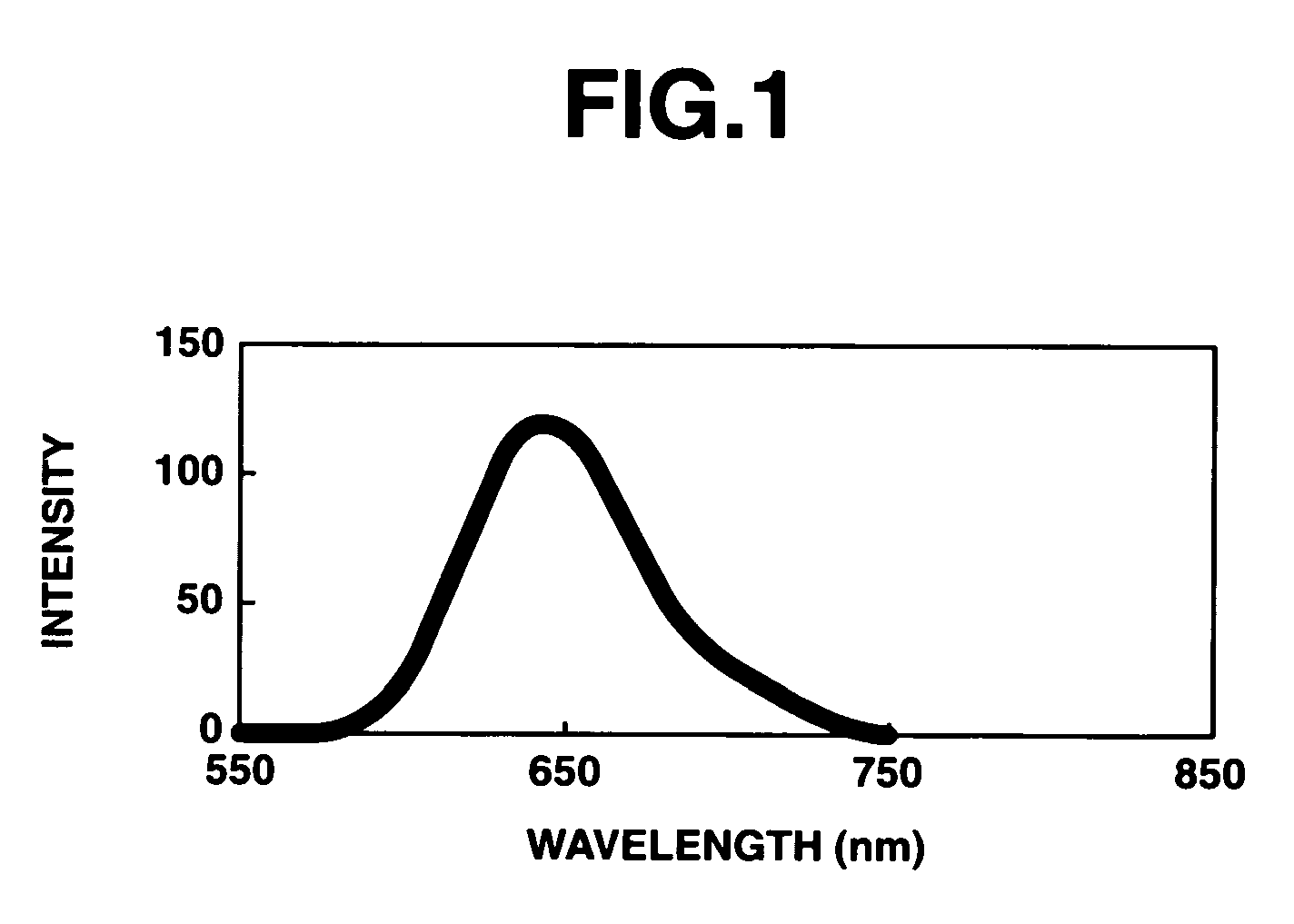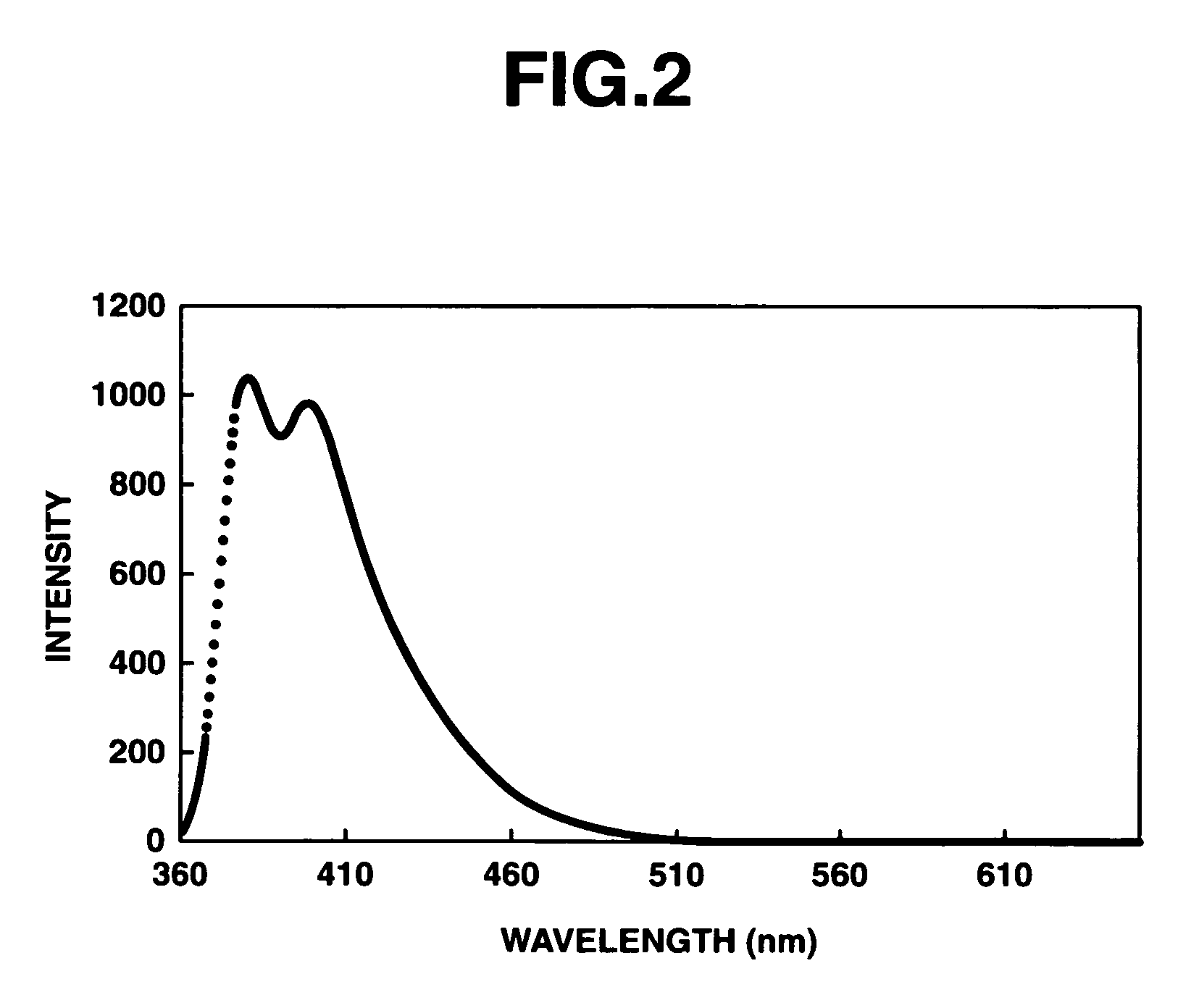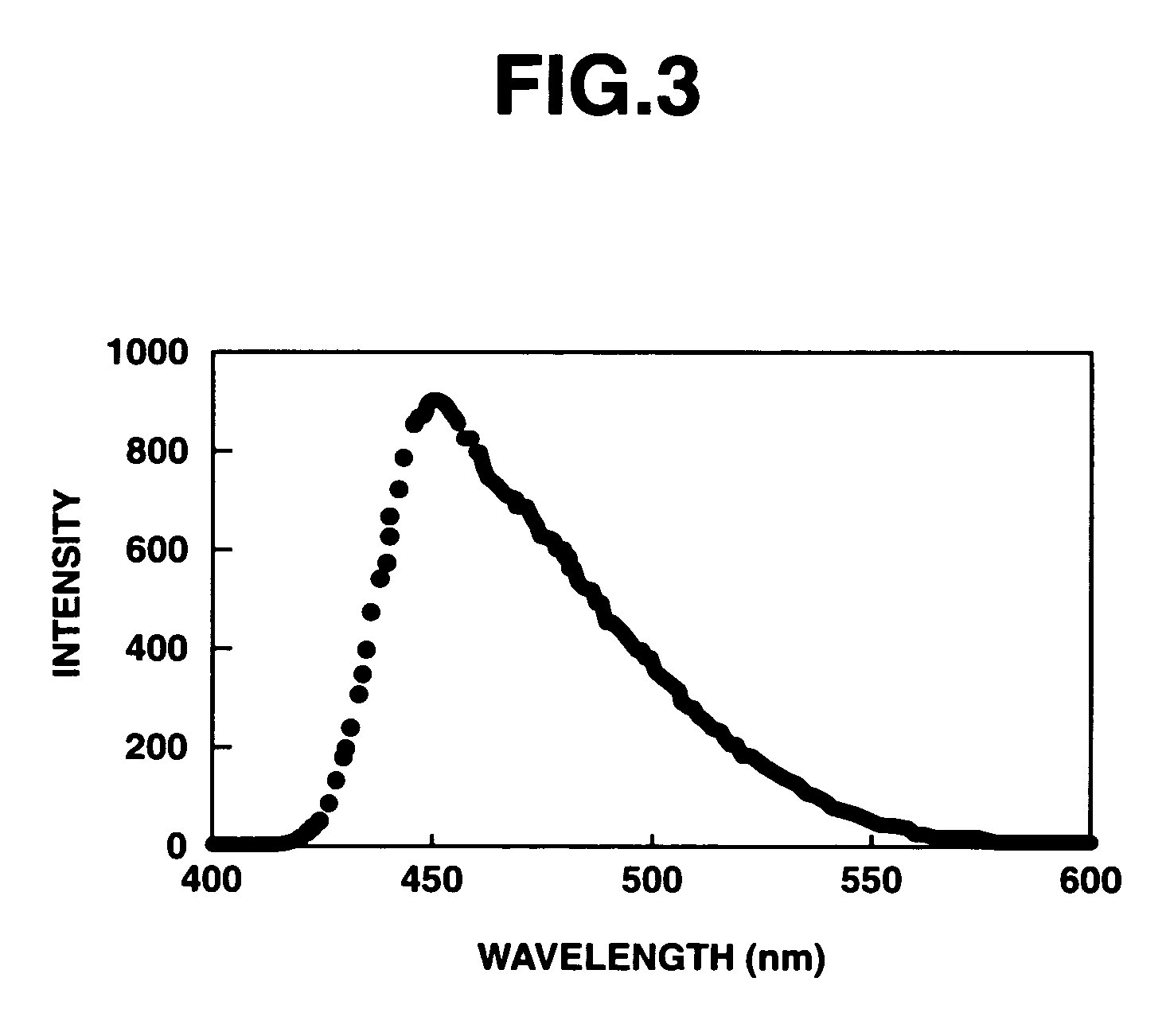Π-conjugated aromatic ring-containing compound and organic electroluminescent device
a technology of organic electroluminescent devices and conjugated aromatic rings, which is applied in the direction of discharge tube luminescnet screens, natural mineral layered products, etc., can solve the problems of blue light emission, color purification, and the involvement of full colorization based on the three prime colors of rgb, and achieve excellent charge transportability, high fluorescent intensity, and excellent stability
- Summary
- Abstract
- Description
- Claims
- Application Information
AI Technical Summary
Benefits of technology
Problems solved by technology
Method used
Image
Examples
example 1
Synthesis of Trans-Silylated (Thiophene-Enediyne) Compound 8
(a) Synthesis of 4-thienyl-1,4-diiodo-1,3-diene compound 3
[0134]
(wherein Me represents a methyl group, n-Pr represents an n-propyl group and i-Pr represents an i-propyl group).
[0135]Tetra-i-propoxytitanium (1.24 ml, 4.19 mmols) was added to an ether (40 ml) solution of 1-trimethylsiyl-1-pentyn 1 (0.534 g, 3.81 mmols), followed by cooing to −78° C. and gradual addition of i-propylmagnesium chloride (1.95M / ether solution, 4.30 ml, 8.38 mmols).
[0136]The temperature was raised to −50° C. in 1 hour, at which agitation was carried out over 4 hours.
[0137]An ether (5 ml) solution of a terminal acetylene compound 2 (0.896 g, 3.05 mmols) was added, followed by agitation at −50° C. for 3 hours.
[0138]Iodine (2.41 g, 9.53 mmols) was added, followed by agitation at −50° C. for 30 minutes and further agitation at room temperature for 2 hours.
[0139]Water was added to the resulting reaction solution at 0° C. and agitated for 30 minutes, fol...
example 2
Synthesis of Trans-(Thiophene-Enediyne) Compound 9
[0172]
(wherein n-Pr represents an n-propyl group, and i-Pr represents an i-propyl group).
[0173]The trans-silylated (thiophene-enediyne) compound 8 (0.729 g, 1.24 mmols) obtained in Example 1 was dissolved in THF (4 ml), to which tetrabutylammonium fluoride (1.0 M / THF solution, 1.87 ml, 1.87 mmols) was added at 0° C., followed by agitation for 3 minutes.
[0174]The reaction solution was diluted with ether and water and, after funnel separation, the resulting aqueous solution was extracted with ether. A combined organic phase was dried over anhydrous magnesium sulfate.
[0175]After filtration, the crude product obtained by concentrating the resulting filtrate under reduced pressure was confirmed with NMR and used as it is for subsequent reaction.
example 3
Synthesis of Trans-Silylated (Thiophene-Enediyne) Dimer Compound 10
[0176]
(wherein n-Pr represents an n-propyl group, and i-Pr represents an i-propyl group).
[0177]The trans-thienyliodo-enyne compound 6 (0.780 g, 1.49 mmols) obtained in Example 1-(d) was dissolved in degassed THF (4 ml), to which tetrakistriphenylphosphine palladium (43.0 mg, 0.0372 mmols), cuprous iodide (14.0 mg, 0.0740 mmols) and diethylamine (3.1 ml) were added at room temperature, in which a degassed THF (8 ml) solution of the crude product of the trans(thiophene-enediyne) compound 9 obtained in Example 2 was dropped.
[0178]The reaction solution was agitated as it is at room temperature for 6 hours, after which water was added to the reaction solution for quenching.
[0179]After extraction with ether from an aqueous phase and washing with a saturated saline solution, the resulting organic phase was dried over anhydrous magnesium sulfate.
[0180]After filtration, the crude product obtained by concentrating the resultin...
PUM
| Property | Measurement | Unit |
|---|---|---|
| boiling point | aaaaa | aaaaa |
| boiling point | aaaaa | aaaaa |
| temperature | aaaaa | aaaaa |
Abstract
Description
Claims
Application Information
 Login to View More
Login to View More - R&D
- Intellectual Property
- Life Sciences
- Materials
- Tech Scout
- Unparalleled Data Quality
- Higher Quality Content
- 60% Fewer Hallucinations
Browse by: Latest US Patents, China's latest patents, Technical Efficacy Thesaurus, Application Domain, Technology Topic, Popular Technical Reports.
© 2025 PatSnap. All rights reserved.Legal|Privacy policy|Modern Slavery Act Transparency Statement|Sitemap|About US| Contact US: help@patsnap.com



